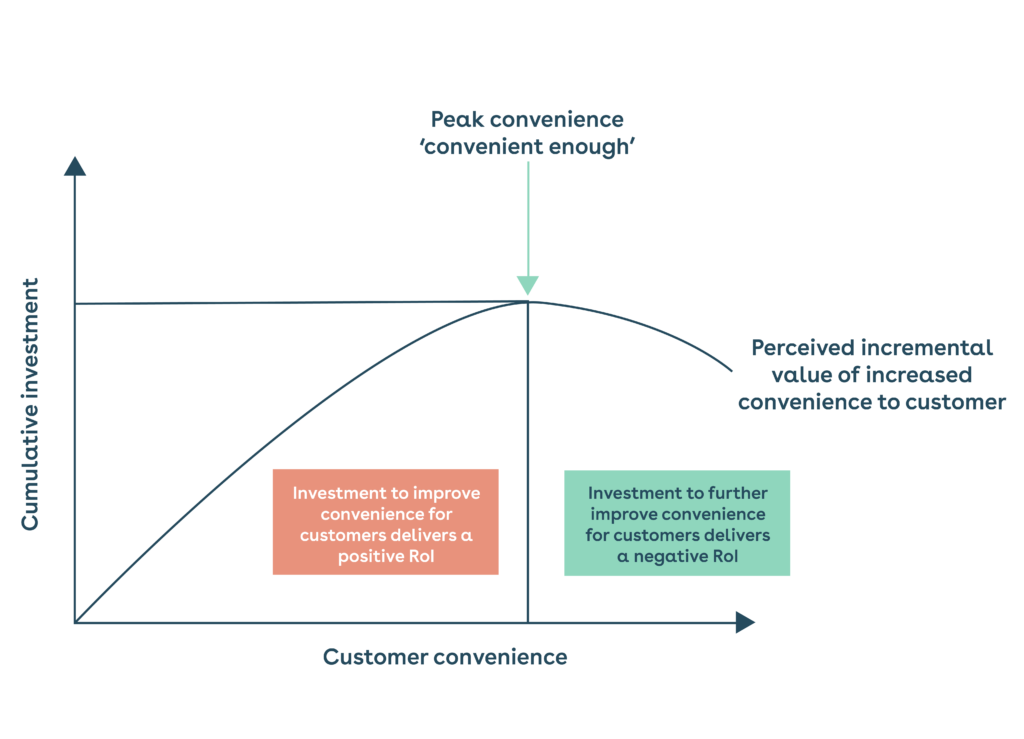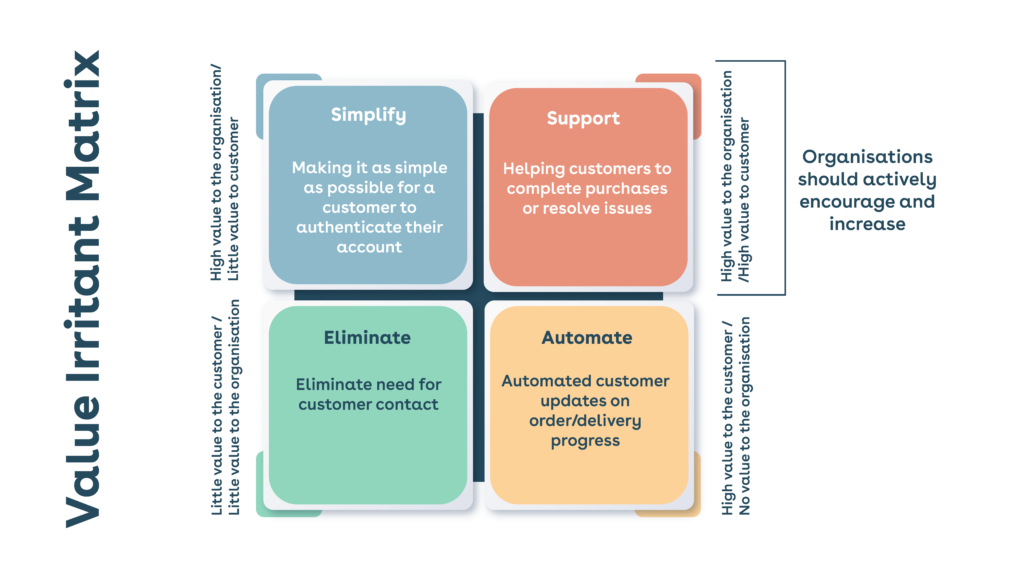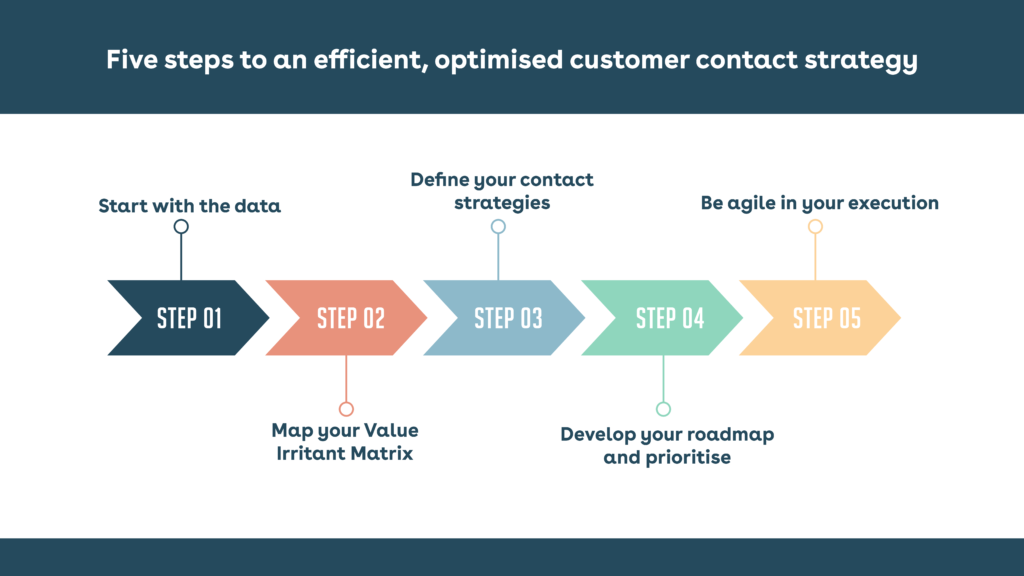In the past decade, customer experience (CX) professionals have faced an ongoing conundrum: how do they balance the desire to adopt digital, self-service, and automation technologies with the need to develop deeper, more human relationships with customers?
At first glance, these may seem like competing ideas, one promotes the use of the latest technology and the other advocates for friendly customer service advisors. The potential of digital and automation technologies is clear: they make lives easier for customers and less costly for the organisation. Likewise, meaningful human experiences can turn customers into loyal and vocal brand advocates, but can prove more expensive.
Still, despite this CX dilemma, these two necessities are not mutually exclusive. There is a balance to be struck, which can be achieved if you know when to get out of the customer’s way and when to offer human support. Achieving this balance is at the heart of modern customer experience design — when organisations understand the value of each interaction and adapt accordingly, their customer experience and profitability improves.
In this article, I’ll discuss how convenience (digital and self-service automation tools) and conversation (human engagement), despite providing benefits in different ways, can both create significant value when applied correctly.
Eliminating effort: an examination of convenience
Let’s start with the idea of convenience and customer effort.
In his book Thinking, fast and slow, Daniel Kahneman describes two systems that drive how we think and make decisions. System One is fast, intuitive, and emotional; System Two is slower, more deliberate, and logical. In general terms, System Two requires more cognitive effort than the first, and, according to Kahneman, humans prefer to avoid effort in most situations, so System One becomes a default setting and therefore pivotal to those working in the development of CX.
When we design customer journeys and experiences, the elimination of effort will, in most cases, create positive outcomes. Organisations should typically avoid triggers that switch customers from System One to System Two thinking, or risk creating an experience that customers don’t feel is worth the effort, potentially forcing them to seek alternatives.

Take the example of renewing a motor insurance policy. The customer’s existing provider will want the renewal or quotation journey to be as convenient and straightforward as possible (System One) to ensure retention. However, a competitor seeking to acquire that customer will hope that they take the time to evaluate the market for potential savings (System Two).
If you need more proof that System One thinking is valuable, just look at Amazon, which has turned convenience into a competitive advantage. The company’s algorithms drive recommendations that reduce the effort of filtering choices. Its single click buy-now checkout process makes purchasing effortless. The success of Amazon Prime shows that customers value convenience enough to pay for it, with guaranteed rapid deliveries at the heart of the service.
When Amazon sets a customer’s benchmark for convenience, it raises the table stakes for every other brand. Unfortunately, however, the convenience arms race is a law of diminishing returns for most organisations.

There is a point of ‘peak convenience’, below which investment in greater convenience produces a positive RoI. However, beyond this point, further investment does not. Essentially, the additional levels of convenience do not translate into sufficient increases in customer value (sales and retention) or reductions in cost-to-serve to recover the extra investment needed to achieve them. Being the most convenient is not a proposition that most brands can sustain while maintaining a competitive advantage. Instead, the challenge is about knowing what is ‘convenient enough’ and differentiating your approach through more meaningful, human experiences when it matters most to your customers.
Emotional experiences: the value of conversation
In our experience, the most important and insightful way to gain an understanding of what customers expect, and place the greatest emphasis on, can be found in the interactions and conversations you are having with them today. Unfortunately, many organisations allow this insight to evaporate before properly harnessing it, but it needn’t be that way.
While traditional contact centre measures such as handling times, waiting times, customer satisfaction scores, etc., can provide aggregated views of customer experience, they do not provide the detail and insight required to support effective CX design. This requires a more in-depth analysis using tools such as natural language processing (NLP), which can help analyse conversations and establish an accurate picture of why customers are contacting you, in what volumes, and through which channels. Where possible, it helps to link this interaction data to transactional data, looking at how the customer behaved before and after the interaction, if their value increased or decreased, if they were acquired, retained, or lost.
In adopting this approach, brands are able to better understand what is happening with their customer interactions and, crucially, how they make customers feel. We know, that emotion is an important contributor to the overall value a customer perceives in their interactions with a brand, in any channel.
Enter the matrix
Here at Gobeyond Partners, a consulting firm specialising in customer journey transformation and CX design, we help clients to develop their contact strategies through the plotting of each interaction reason — also known as the customer intent — within a Value Irritant Matrix, which maps the interaction based on its value to the organisation and value to the customer.
Value to the organisation measures each interaction’s impact on value outcomes (revenue, retention, advocacy, etc.), while value to the customer measures each resolution’s importance, urgency, and consequence to the customer.
The act of plotting contacts onto the matrix is a mix of science and art, blending the data provided by demand analysis with the expert judgement and insight from speaking to customers and frontline colleagues.
Each quadrant of the matrix relates to a strategic goal for contact strategy and customer experience design.

The outputs from the completion of the Value Irritant Matrix provide an easy route to developing contact strategy business cases and change programmes.
Typically, business cases for activities in the elimination, automation, and simplification quadrants are based on cost-reduction and achieved through the reduction in demand, and efficiency improvements. However, business cases for the support quadrant often relate to increased customer value – where advisor guidance and support can result in incremental revenue or improved customer retention.
Support quadrant client story: measuring value in the real world
We recently worked with a major international retailer on a project in the support quadrant. Like most retailers, they experienced significant growth in online sales due to Covid as the pandemic disrupted their physical stores.
Whilst the company did a great job designing the website and e-commerce user experience, it was initially set up as a self-service sales journey. Visitors browsed the site, explored products and proceeded to the checkout without being offered the chance to interact with a human sales assistant.
On one level, this was highly beneficial to the client because the cost-of-sale was extremely low, only requiring the set-up and maintenance of the site and its content. However, they were also aware that one of the things customers value most about visiting their outlets was the opportunity to receive expert guidance and support from the colleagues in the store.
Based on our Value Irritant Matrix, we placed assisting customers through the online sales journey in the top-right ‘support’ box. We then designed a proof of concept with the client to test the hypothesis that sales advisors providing support to customers online could generate a positive ROI.
Using proactive, behaviour-based rules, we offered chat invitations to website visitors at various points within sales journeys for different product types. Through an agile, test-and-learn approach, we refined the rules and advisor conversations to optimise the experience and outcomes. Ultimately, for every £1 the client invested in people and technology, they earned £15 in revenue through increased conversion rates and basket values.
This example shows that eliminating all human conversations should not be the goal because increasing opportunities for human support and conversation can generate a positive ROI when targeted to the right interactions.
Five steps to understanding the value of interactions
Balancing convenience with conversation is essential to the development of a modern, optimised CX strategy. Achieving this balance, through the analysis of each customer interaction and identifying the subsequent value of these interactions to customer and organisation alike, enables a series of benefits from profitability to loyalty, advocacy, and more.
Getting the balance right requires a structured approach. In our work with clients in this space, we adopt a five-step framework that offers a clear pathway to understanding their interactions and to achieving their convenience/conversational CX balance.

Dave Pattman is Managing Director, Customer Experience practice, with Gobeyond Partners, part of the Webhelp group. Dave’s practice is responsible for helping organisations to design, improve and transform their customer experience. Find out more here.



